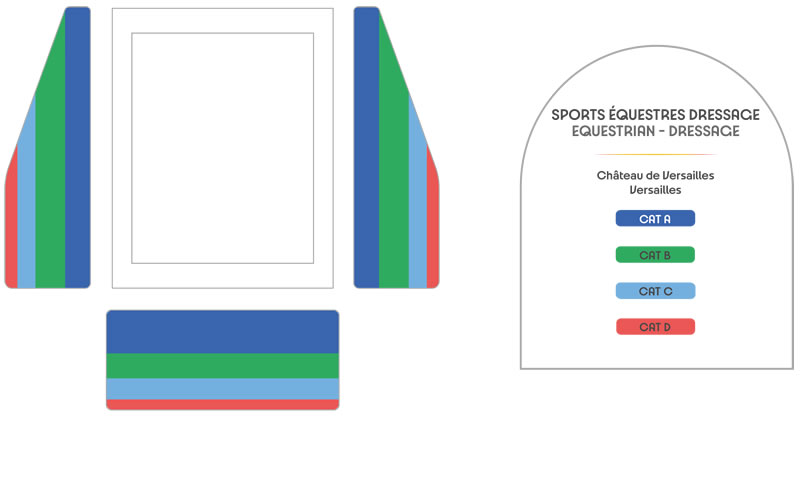EQU08 - Summer Olympics - Paris Olympic 2024 Olympic Equestrian Tickets

CHÂTEAU DE VERSAILLES - Equestrian Dressage
Olympic Equestrian
Olympic equestrian sports represent a unique blend of athleticism, artistry, and partnership between rider and horse. Unlike other Olympic events, equestrian competitions feature both men and women competing on equal terms, with no separate divisions for gender. Additionally, it is the only Olympic sport where an animal plays a crucial role in the outcome, highlighting the deep trust and communication required between rider and horse.
There are three equestrian disciplines at the Olympic Games: dressage, eventing, and show jumping. Each discipline tests different aspects of equestrian skill and horse training. Dressage, often referred to as "horse ballet," focuses on precision, grace, and the subtle interaction between horse and rider as they perform a set sequence of movements. Judges score each movement based on accuracy, fluidity, and harmony.
Eventing is the most demanding of the three disciplines, often described as an equestrian triathlon. It combines dressage, cross-country, and show jumping over the course of several days. The cross-country phase, in particular, is a thrilling test of endurance, courage, and agility, as horse and rider navigate a long outdoor course filled with challenging natural and man-made obstacles. Success in eventing requires a well-rounded horse and a versatile rider.
Show jumping, the most widely recognized equestrian event, involves horse and rider tackling a course of fences within a set time limit. It emphasizes speed, accuracy, and the ability to adapt quickly to a changing course. Penalties are given for knocking down fences, refusals, and exceeding the time limit, making every second on course critical.
Equestrian sports have been part of the modern Olympic Games since 1900, though the format and rules have evolved over the years. Originally limited to military officers, equestrian events have since become accessible to civilian athletes from around the world. Nations like Germany, Great Britain, the United States, and the Netherlands have traditionally dominated the sport, but countries from all continents now regularly compete at the highest levels.
The Olympics showcase the pinnacle of equestrian achievement, celebrating not just the athletic prowess of riders, but also the exceptional training and spirit of their equine partners. As both a competitive and deeply traditional sport, Olympic equestrian events continue to captivate audiences with their elegance, excitement, and the profound bond between human and horse.
